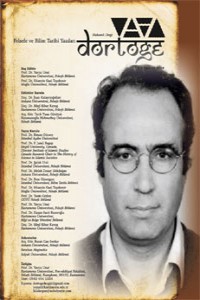Öz
Bu çalışmada Lacan’ın ayna evresi kuramı ile bir mitolojik anlatı olarak Narkissos öyküsü arasında kurulan yeni ve post yapısalcı bir söylem ele alınacaktır. Bu söyleme göre özne ‘benlikten’ sonra gelen bölünmüş bir yapıdır. Lacan’a göre 6-18 aylık bir bebek, ayna evresinde ilk kez kendi benliğinin ayrımına kendisinden farklı ve kendisinin dışında bir yerde, bir yansıtıcı yüzeyde varmaktadır. Bebek, bu yansıtıcı yüzeyde karşılaştığı imajını ilk defa annesinden özerk bir varlık ve kendine ait bir bütünlük olarak algılamakta ve bir ideal-ben olarak tasarlanan bu özerk varlığa büyük hayranlık duymaktadır. Yani bebek, kendi varlığını bir imaj üzerinden ayırt ederek kendisine bu imaj yoluyla birlik duygusu kazandırmış ve kendi benliğini hayran olunası bir bütünlük olarak kavramıştır. Fakat bu benlik ve bütünlük duygusu, Lacanyen gerçekliğin (reality) öğeleri olan dil ve toplum yasaları ile özne olmak pahasına parçalanmaya mahkumdur. Narkissos da -tıpkı Lacan’ın aynasındaki gibi- kendi yansıması üzerinden hayran olduğu imajını gerçekliğin içinde kavrama çatışmasında kaybetmiş ve bu dünyaya bir imaj olarak tutunduğu benliği de özne olmak pahasına sudaki aynanın ötesine geçerken boğularak yok olmuştur. Diğer bir deyişle Narkissos’un sudaki yansımasında hayran olduğu benliği; özneleşirken aşılmaz bir deformasyona uğramış ve Narkissos bunu hayatıyla ödemiştir. İşte bu çalışmada, Narkissos mitinde Narkissos’un ölümüyle sembolize edilmiş olan imgesel ile simgesellik arasındaki trajik bölünmenin yalnızca psikopatolojik bir olgu değil aynı zamanda felsefe tarihinde öznenin inşasına dair temel bir anlatı olduğu savı Lacanyen özne kuramı ile birlikte temellendirilecektir.
Kaynakça
- Badiou, Alain, Being and Event, (translated by O. Feltham), New York, Continuum, 2005.
- Badiou, Alain, Sonsuz Düşünce, çev. I. Ergüden ve T. Birkan, İstanbul, Metis Yayınları, 2013.
- Badiou, Alain, Roudinesco, Elisabeth, Dün, Bugün, Jacques Lacan, çev. Akın Terzi, İstanbul, Metis Yayınları, 2016.
- Bowie, Malcolm, Lacan, çev. V. Pekel Şener, Ankara, Dost Yayınları, 2007.
- Homer, Sean, Jacques Lacan, çev. Abdurrahman Aydın, Ankara, Phoneix, 2005.
- Lacan, Jacques, Ecrits, translated by Alan Sheridan, London, Routledge, 2005.
- Lacan, Jacques, Psikanalizin Dört Temel Kavramı, çev. Nilüfer Erdem, İstanbul, Metis Yayınları, 2013.
- Kaçar, E. (2018). Lacan ve Topoloji, FLSF (Felsefe ve Sosyal Bilimler Dergisi), Bahar, sayı 25, ss.535-554.
- Kant, Immanuel, Arı Usun Eleştirisi, çev. Aziz Yardımlı, İstanbul, İdea Yayınevi, 2010.
- Sarup, Madan, Post-yapısalcılık ve Postmodernizm, çev. Abdukbaki Güçlü, Ankara, Pharmakon, 2017.
- Zizék, Slavoj, Hiçten Az, Hegel ve Diyalektik Materyalizmin Gölgesi, çev. Erkan Ünal, İstanbul, Encore Yayınları, 2015.
- Zizék, Slavoj, Kendini Tutamayan Boşluk, çev. Barış Engin Aksoy, İstanbul: Metis Yayınları, 2019.
Öz
This paper explores a new and post-structuralist discourse on the relationship between Lacan’s theory of mirror stage and the story of Narcissus as a mythological narrative. According to this discourse, subject is a construction posterior to the ‘I’. Lacan suggests that in the mirror stage 6-18 months old infants discern the I as something distinct from and outside of themselves for the first time through a reflective surface. An infant comprehends the image they see in this reflective surface as a being independent of their mother and an object belonging to themselves, and they greatly admire this independent object as an ideal-I. That is, by discerning their own being through an image, the infant achieves a feeling of unity via this image and perceives their own being as an admirable unity. This feeling of I and unity, however, is doomed to decay as to become subject by means of the elements of Lacanian reality, namely language and the laws of society. Within the reality, Narcissus – exactly like in the Lacan’s theory of mirror – lost the confrontation of perceiving the image he admired in his reflection. The I of Narcissus, which he has been holding on as an image in this world, is drawn and demised whilst going beyond the water mirror so as to become a subject. In other words, the I that Narcissus admired in the reflection of the water underwent an unsurmountable deformation and he paid the price with his life. In this study, from the perspective of the Lacanian theory of subject it will be argued that the tragic split between imaginary and symbolic order represented by the death of Narcissus is not only a psychopathologic fact, but it is also a fundamental narrative about the construction of subject in the history of philosophy.
Kaynakça
- Badiou, Alain, Being and Event, (translated by O. Feltham), New York, Continuum, 2005.
- Badiou, Alain, Sonsuz Düşünce, çev. I. Ergüden ve T. Birkan, İstanbul, Metis Yayınları, 2013.
- Badiou, Alain, Roudinesco, Elisabeth, Dün, Bugün, Jacques Lacan, çev. Akın Terzi, İstanbul, Metis Yayınları, 2016.
- Bowie, Malcolm, Lacan, çev. V. Pekel Şener, Ankara, Dost Yayınları, 2007.
- Homer, Sean, Jacques Lacan, çev. Abdurrahman Aydın, Ankara, Phoneix, 2005.
- Lacan, Jacques, Ecrits, translated by Alan Sheridan, London, Routledge, 2005.
- Lacan, Jacques, Psikanalizin Dört Temel Kavramı, çev. Nilüfer Erdem, İstanbul, Metis Yayınları, 2013.
- Kaçar, E. (2018). Lacan ve Topoloji, FLSF (Felsefe ve Sosyal Bilimler Dergisi), Bahar, sayı 25, ss.535-554.
- Kant, Immanuel, Arı Usun Eleştirisi, çev. Aziz Yardımlı, İstanbul, İdea Yayınevi, 2010.
- Sarup, Madan, Post-yapısalcılık ve Postmodernizm, çev. Abdukbaki Güçlü, Ankara, Pharmakon, 2017.
- Zizék, Slavoj, Hiçten Az, Hegel ve Diyalektik Materyalizmin Gölgesi, çev. Erkan Ünal, İstanbul, Encore Yayınları, 2015.
- Zizék, Slavoj, Kendini Tutamayan Boşluk, çev. Barış Engin Aksoy, İstanbul: Metis Yayınları, 2019.
Ayrıntılar
| Birincil Dil | Türkçe |
|---|---|
| Konular | Felsefe |
| Bölüm | Araştırma Makalesi |
| Yazarlar | |
| Yayımlanma Tarihi | 28 Haziran 2019 |
| Gönderilme Tarihi | 26 Haziran 2019 |
| Yayımlandığı Sayı | Yıl 2019 Sayı: 15 |


